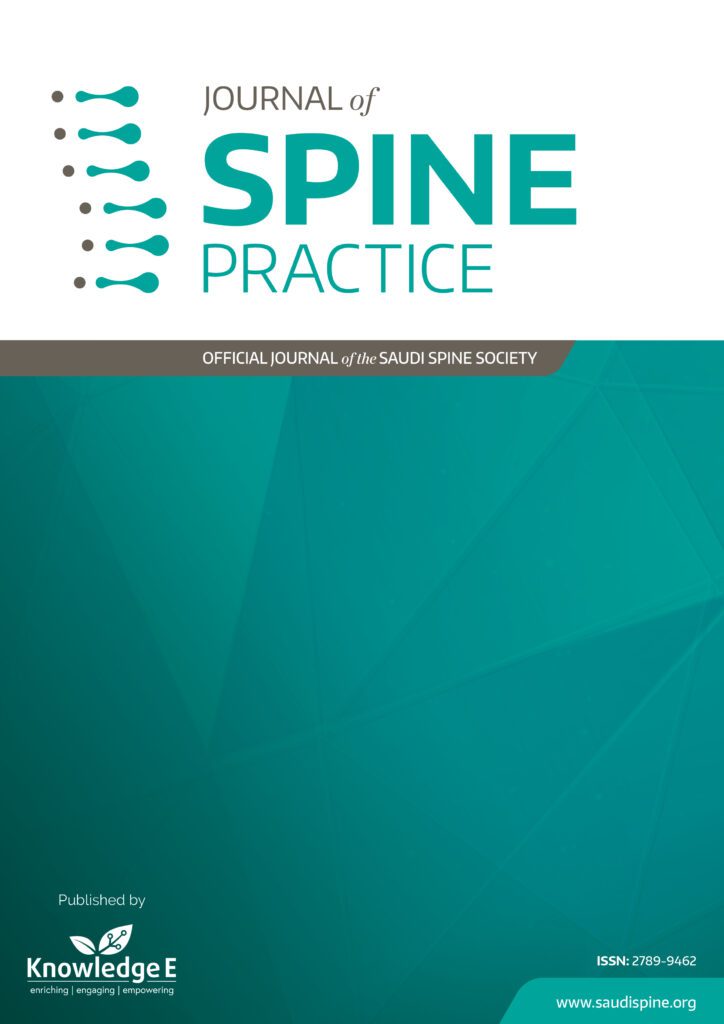
Journal of Spine Practice
ISSN: 2789-9462
Leading research in all spine subspecialties focusing on orthopaedic spine, neurosurgery, radiology, and pain management.
Spinal Surgery During COVID-19 Pandemic in Saudi Arabia
Published date: Nov 07 2021
Journal Title: Journal of Spine Practice
Issue title: Journal of Spine Practice (JSP): Volume 1, Issue 1
Pages: 12
Authors:
Abstract:
Introduction: The COVID-19 pandemic has challenged the healthcare system’s capacities around the world. Due to the alarming situation, medical activities have been restricted to allocate resources to treat COVID-19-infected patients. However, medical emergencies still need urgent medical intervention. Considering the lack of reliable data regarding spinal surgeries during the COVID-19 pandemic, the present study sought to analyze the pattern of spinal surgeries in KSA.
Methodology: A case series of patients who had urgent spine surgeries during COVID-19 pandemic was conducted in a tertiary care hospital. Data on patients’ demographics, COVID-19 test result, American Society of Anesthesia Score, SSS grade, diagnosis, and data related to surgery and postoperative findings were collected. All collected data were then processed and analyzed. Surgical outcomes based on source of admission were compared using Chi-square test.
Result: A total of 63 patients who underwent spine surgery during the COVID-19 pandemic were included. The mean age of the patients was 53 ± 18 years and males were predominant (59%). The positive COVID-19 patients were 3%. Almost half of the patients were classified into ASA II. The majority were categorized into grade B (65%) according to SSS. The frequently diagnosed condition was fracture (33%), followed by spinal stenosis (18%) and metastatic (10%), while the most mentioned location was lumbar (61%). Postoperative complications were found in 11% of the patients. The readmission rate within 30 days, unplanned return to OR and ICU admission were 19%, 13%, and 11%, respectively. While the mean duration between admission and surgery was 8 ± 20 days, the mean duration of length of stay was 20 ± 29 days. Further, a significant association was seen between the admission source and the surgical procedure performed and surgical indication.
Conclusion: It has been demonstrated that the surgical intervention was only provided to patients requiring immediate or urgent spinal management. However, the length of hospitalization and duration between hospital admission and surgery was substantially prolonged. Further studies are warranted to determine the factors leading to prolonged hospitalization and time between hospital admission and surgery.
References: